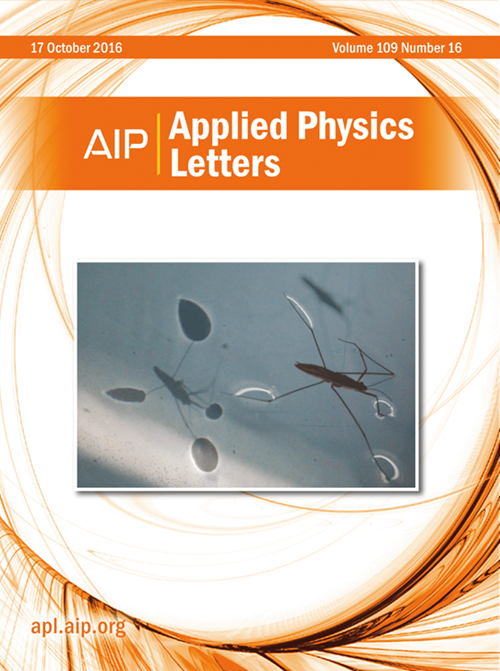Ultra-broadband terahertz polarization converter based on flexible metamaterial
IF 3.5
2区 物理与天体物理
Q2 PHYSICS, APPLIED
引用次数: 0
Abstract
Polarization is one of the basic properties of electromagnetic (EM) waves, and polarization conversion is essential in many terahertz (THz) applications, including communications and sensitive measurements. Due to the limitations of the materials and process, existing THz polarization converters generally have the disadvantages of narrow operating frequency band and non-flexibility. We experimentally demonstrate a flexible ultra-broadband THz polarization converter operating in reflection. It can efficiently convert a linearly polarized THz wave to its orthogonal counterpart in a broadband regime. The device consists of three layers: the lower metal film, the middle dielectric layer, and the upper metal resonance structure array. The unit cell of the upper metal resonance structure is a four-open-ring formed by subtracting two metal bars from a metal ring. The position of the opening is in the diagonal direction of 45° from the upper right corner to the lower left corner of the unit structure. The device is simulated using a full wave EM simulation software and fabricated by a surface micromachining process. The test experiment is completed using a THz-TDS spectrometer and the results show that the polarization conversion ratio is more than 0.8 in an ultra-broadband regime from 1.45 to 2.67 THz. This ultra-broadband conversion is mainly caused by the magnetic resonance of THz waves. More importantly, the convertible frequency band can be tailored for practical applications across the EM spectrum.偏振是电磁波(EM)的基本特性之一,在许多太赫兹(THz)应用中,包括通信和敏感测量,偏振转换都是必不可少的。由于材料和工艺的限制,现有的太赫兹偏振转换器普遍存在工作频带窄和不灵活的缺点。我们通过实验展示了一种在反射条件下工作的灵活超宽带太赫兹偏振转换器。它能在宽带范围内有效地将线性极化太赫兹波转换为正交对应波。该装置由三层组成:下层金属膜、中间介质层和上层金属谐振结构阵列。上层金属共振结构的单元是一个四开口环,由一个金属环减去两个金属条而形成。开口位置位于单元结构右上角至左下角 45° 的对角线方向。该装置使用全波电磁仿真软件进行仿真,并通过表面微加工工艺制作而成。使用太赫兹-TDS 光谱仪完成了测试实验,结果表明,在 1.45 至 2.67 太赫兹的超宽带范围内,极化转换率大于 0.8。这种超宽带转换主要是由太赫兹波的磁共振引起的。更重要的是,该可转换频段可为整个电磁频谱的实际应用量身定制。
本文章由计算机程序翻译,如有差异,请以英文原文为准。
求助全文
约1分钟内获得全文
求助全文
来源期刊

Applied Physics Letters
物理-物理:应用
CiteScore
6.40
自引率
10.00%
发文量
1821
审稿时长
1.6 months
期刊介绍:
Applied Physics Letters (APL) features concise, up-to-date reports on significant new findings in applied physics. Emphasizing rapid dissemination of key data and new physical insights, APL offers prompt publication of new experimental and theoretical papers reporting applications of physics phenomena to all branches of science, engineering, and modern technology.
In addition to regular articles, the journal also publishes invited Fast Track, Perspectives, and in-depth Editorials which report on cutting-edge areas in applied physics.
APL Perspectives are forward-looking invited letters which highlight recent developments or discoveries. Emphasis is placed on very recent developments, potentially disruptive technologies, open questions and possible solutions. They also include a mini-roadmap detailing where the community should direct efforts in order for the phenomena to be viable for application and the challenges associated with meeting that performance threshold. Perspectives are characterized by personal viewpoints and opinions of recognized experts in the field.
Fast Track articles are invited original research articles that report results that are particularly novel and important or provide a significant advancement in an emerging field. Because of the urgency and scientific importance of the work, the peer review process is accelerated. If, during the review process, it becomes apparent that the paper does not meet the Fast Track criterion, it is returned to a normal track.
 求助内容:
求助内容: 应助结果提醒方式:
应助结果提醒方式:


